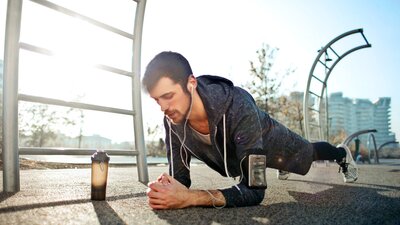Balance is needed in every aspect of life. The body can grow imbalances by preferring one side over another. This can even be evident in simple acts like walking. Balance training can improve functional capacity in walking, alongside the many other imbalances (1). Training for balance can be integrated into one’s routine fairly easily.
Points to Consider
Proprioception is one’s awareness of movement. One of the biggest proponents to proprioception is sight. This can deceive balance. A lack of proprioception can lead to limited functionality, difficulties in walking, and postural control (2). To improve balance, gaze at one object while moving.
The foot’s connection to the ground is the root of balance. People do not spend enough time on their feet, nor do not balance properly on them. The Tripod Effect can even out foot placement. Imagine there are three points of the foot to plant on the ground: the heel, big toe, and pinky toe. Shoes that assist in foot placement are flat-footed shoes and soleless shoes. Even exercising without shoes is a popular trend.
Even feet is one thing, but uneven ground is another. Equipment that can be helpful in balance training are blocks, boxes, and bosu balls. If those are not available, simply standing on one foot can get the job done.
Standing Balance Exercises
Balance starts from the feet and travels up the posterior chain. These exercises can develop the body for better balance and posture. The muscles worked for standing balances travel through the feet, calves, hamstrings, hips, and glutes.
Standing balance can be tested through hip contraction and straight-leg extension. Both have a different way of distributing weight throughout the body. Conversely, they recruit different muscles around the posterior chain.
Step Ups
Arguably the simplest movement on this list, the step-up is as easy as walking up stairs. Many people only use their toes to walk up stairs. For better posterior strength, the entire foot should hit the stair.
Lunges
While lunges can be placed in the anterior muscle category, it can still help with balance. The act of using one side at a time makes it a part of this list. From easiest to hardest, variations include bulgarian split squats, skater squats, and pistol squats.
Jump lunges are a fast-paced way to test balance. Like step-ups, the entire foot should hit the ground before springing back up into the air.
Single-Leg RDL
This may be the toughest balance exercise of the bunch. The weight distribution must be controlled horizontally and vertically. All the while, a weight may be in play. It’s important to avoid hyperextension of the knee and foot imbalances.
Single-Leg Calf Raises
Calf exercises are often forgotten. The calf muscles are used in everything, especially walking and running. If those are not enough to practice balance, calf raises are a great addition to a routine.
Other Activities
Walking and climbing stairs are good for lower intensity balance work. Running and jumping rope test balancing at a higher intensity.
Core Balancing Exercises
Balance stems from the feet and travels towards the core, an essential muscle group connected to everything. From the abdomen to the spine, these movements can contribute to improving one’s overall balance.
Bird-Dog
One of the best functional movements for spinal balancing. The spine connects the lower and upper body. Without a healthy spine, the entire body would be out of balance.
Planks
The plank is an essential movement for a stable core. It can recruit any muscle from the feet to the shoulders. The variations involve balancing on one side by lifting one limb off the ground. These include the side plank, one-legged plank, one-arm plank, and awkward plank (opposing arm and leg lifted).
Reverse planks are a variation for the posterior chain. Instead of the anterior muscles pushing away from gravity, the posterior chain is resisting it.
Single-Leg Glute Bridges
This works the same muscles as the standing balance exercises, but is ground-based. It is a hinge movement that works the glutes, core, and hamstrings. The single-leg glute bridge is an alternative to the single-leg RDL.
Other Activities
The core can be recruited in any kind of work. Yoga, kettlebells, and cardio all need it to accomplish the work.
Find your Balance
Balance is hidden throughout our entire day. Our bodies can speak volumes about how we can correct these imbalances. From sports to daily living, coordination and balance make for a better body.
Works Cited


